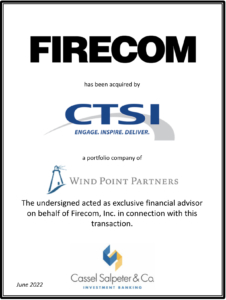By Helen Floersh
Jan. 9, 2023
Messenger RNA went from “a technology looking for a disease” to a global phenomenon in what seems like an instant thanks to the COVID-19 vaccines. With the concept proven, a flurry of high-profile studies and clinical trial results published in the past year suggest the platform is on the cusp of a longawaited heyday.
The tech could soon find its way into treatments for indications beyond infectious disease to cancer, heart conditions and more. But it wasn’t always this way.
“Before COVID and the vaccines, there were a handful of biotech companies doing RNA work,” Drew Weissman, M.D., Ph.D., a Penn Medicine professor whose work was the basis of the SARS-CoV-2 vaccines, recalled in an interview with Fierce Biotech Research. “There was funding available, but it wasn’t overwhelming like it is nowadays.”
Back then, upstarts like BioNTech and Moderna—now global phenomena for their work during the pandemic—were testing RNA therapies in clinical trials for cancer, heart damage, influenza and genetic defects. Preclinical research had been ongoing for decades. Yet while scientists crowed about mRNA’s potential—piquing investor interest—it wasn’t clear where exactly the tech was headed.
“MRNA technology itself was basically a technology looking for a disease,” Ira Leiderman, managing director of the healthcare practice at Miami-based investment banking firm Cassel Salpeter & Co., said. “There was a lot of research around it and a fair bit of interest from Wall Street, but it wasn’t always the darling of Wall Street.”
RELATED: Promise of in vivo drug production sets off an mRNA arms race
That, of course, has changed. Thanks to the success of Moderna and BioNTech’s COVID-19 vaccines, the question is no longer whether RNA technology can be put to use, but where its limits lie.
“The likelihood of success seems much higher and more certain just because of what we saw with the COVID vaccines,” Margery Fischbein, also managing director of the healthcare practice at Cassel Salpeter, said. “We may be on the verge of a whole new area opening up for this technology that just a few years ago people weren’t sure what to do with.”
A new paradigm for infectious disease
Back in November 2012, researchers from Germany-based CureVac published a paper in Nature touting the results of an mRNA-based influenza vaccine in mice, pigs and ferrets. The study was the first proof-of-concept for the technology; until then, many scientists had worried mRNA would be too unstable to use as a vaccine against infectious disease.
“The development of alternative influenza vaccine approaches that could be rapidly deployed in the event of a pandemic should be a public-health objective of high priority,” Sook-San Wong, Ph.D. and Richard Webby, Ph.D., scientists from St. Jude Children’s Research Hospital who weren’t involved in the study, wrote in an accompanying editorial. The ease of production made mRNA-based vaccines a better option than traditional protein vaccines, they added.
Conventional flu vaccines work by introducing a bit of inactivated virus to the body and “training” it to mount an immune response. mRNA vaccines work a little more upstream: They give the body a set of instructions to produce a protein found on the virus, which teaches the immune system to react to it.
MRNA vaccines induce a more potent immune response than inactivated virus vaccines, according to Weissman.
RELATED: Collaboration to Develop mRNA Vaccines Expands
Furthermore, mRNA sequences are much smaller than inactivated viruses. Cells encode each sequence separately, so a lot can be included into one vaccine, according to Weissman, who was involved with the development of Penn’s universal flu vaccine. That’s why CureVac’s flu vaccine could protect against four different strains of the seasonal flu, or why a universal flu vaccine from the University of Pennsylvania may work against all of them.
MRNA vaccines for influenza have since entered clinical trials, including a new seasonal vaccine that targets four strains at once by CureVac and development partner GSK. The shot entered phase 1 clinical trials in February 2022. The Penn vaccine in preclinical development goes even further: It’s designed to target all 20 flu virus subtypes. In a paper published in late November, the research team behind the vaccine reported that it effectively protected mice from severe disease and death.
MRNA-based vaccines can also train the body to recognize and deactivate proteins involved in a parasite’s lifecycle. That’s the mechanism behind a new, two-part malaria vaccine co-developed by the labs of Weissman and Nirbhay Kumar, Ph.D., at George Washington University (GWU). Protein-based vaccines against malaria train the immune system to recognize a compound involved in infection by the parasite, while the mRNA-based vaccines target not only that compound but another that drives transmission.
In a paper published in npj Vaccines on Dec. 1, 2022, researchers at GWU and Penn reported that their vaccine series was 80% effective against infection and 95% effective against transmission. That’s a significant improvement from the roughly 35% efficacy against infection offered by Mosquinix, the current vaccine in use against malaria, which offers no protection against transmission at all.
The vaccine series works by encoding proteins that disrupt two different stages of the pathogen’s life cycle. Scientists have known for years that such a strategy would be necessary to eliminate malaria, and it’s likely that scientists will need to add even more mRNA sequences to boost the vaccine’s efficacy
RELATED: Gates Foundation bets $52M on CureVac’s mRNA promise
“We believe [targeting two points] isn’t enough,” Weissman said. “We need to attack the malaria at different life cycle stages and with different immunogens to get a broader and stronger response.”
The initial data on the malaria vaccine is “highly encouraging,” said Matthew Laurens, M.D., a pediatric infectious disease physician at the University of Maryland School of Medicine. While more work will need to be done to ensure the vaccine works in humans, its efficacy against infection and transmission is a good place to start—especially since mRNA vaccines have been shown to be safe in young children, who are the primary population that need to be inoculated against malaria.
“The proof of principle is there,” Laurens said. “We’ve seen the challenge in mice that’s very promising and it warrants further clinical development.”
Combating cancer
Cancer vaccines could be considered the Holy Grail of oncology, but they’ve proven elusive.
No matter the platform, developing cancer vaccines is more difficult than creating vaccines that work against infectious disease, James Gulley, M.D., Ph.D., director of oncology at the National Cancer Institute, explained. That’s because the body more readily mounts an immune response to foreign targets than it does to host cells that have turned cancerous.
Cancer was one of the first applications considered for mRNA technology. Researchers believed the tech held several advantages over other vaccine platforms, like the ability to induce a strong immune response and the relatively low cost. The newfound enthusiasm for all things mRNA has revived hopes.
“The field of mRNA vaccines has exploded following COVID, but [oncology researchers] had been working on mRNA vaccines for many, many years even prior to COVID,” Gulley said. “It’s been nice to see a pooling of information from infectious disease experts and those with a background in cancer vaccines.”
RELATED: The mRNA era has arrived thanks to COVID-19. What’s next in the pipeline?
With much fanfare, Moderna announced in December 2022 that a candidate developed with partner Merck & Co. cut down on melanoma recurrence in combination with Keytruda in a phase 2 clinical trial.
BioNTech, too, saw glimmers of success this year with a personalized mRNA vaccine for pancreatic cancer. In June, the company reported that autogene cevumeran, developed with partner Roche and given in combination with Genetech’s Tecentriq and chemotherapy, delayed tumor recurrence in 16 patients with pancreatic cancer.
Cancer biotech Gritstone also reported some early success from its selfamplifying mRNA vaccine, or samRNA vaccine, against solid tumors. The genetic sequences in samRNA vaccines are delivered to the body alongside enzymes from alphaviruses, which copy them inside cells. This helps them stay in the body for more than twice as long as “regular” mRNA vaccines like the ones built by Moderna and BioNTech against COVID-19.
At the Society for Immunotherapy of Cancer’s annual meeting in November 2022. Gritstone presented data from a phase 1/2 clinical trial showing a survival benefit in patients who received the vaccines in combination with an immunotherapy and a monoclonal antibody.
Clearly, like other cancer treatments, mRNA-based cancer vaccines still need to be used in combination with other therapies to work. But the results of recent clinical trials and proof-of-concept studies—along with the fact that mRNA is easier to personalize against a patient’s cancer than other vaccine platforms—are encouraging, Gulley said.
“Because of the robustness of what we’ve seen in multiple different mRNAbased approaches, I think that gives us a new confidence in this platform in the field of oncology,” he said.
RELATED: Sanofi invests €80M in BioNTech as cancer mRNA hits clinic
Testing the limit
With so much potential in cancer and infectious disease, it’s reasonable to wonder: What can’t RNA technology do?
“We don’t know yet,” Weissman said. “It’s a matter of testing.”
There are, however, some cases where mRNA vaccines are unlikely to work, he noted, such as preventing diseases caused by certain types of worms. That’s because the platform induces a type of immune response that isn’t effective against them.
Worm diseases aside, 2023 promises to bring even more momentum on the mRNA front. BioNTech has lined up five clinical trials for mNRA vaccines against infectious disease—including HSV-2, shingles, tuberculosis, malaria and flu—some in collaboration with Pfizer. Moderna, too, is working on its own HSV vaccine, along with many others for infectious disease.
The preclinical world is active with new applications as well. Weissman was one of the authors on a paper published in early 2022 detailing experiments where the tech was used to produce chimeric antigen receptor T, or CAR-T, cells in a mouse model of heart fibrosis, a condition that leads to heart failure. By removing cells that were causing fibrosis, the therapy was able to improve cardiac function in the mice.
Going beyond vaccines “is where the real excitement is going to come,” Weissman said. He’s also currently leading a project that uses a single injection of RNA to treat sickle cell anemia. The therapy targets bone marrow stem cells that make red blood cells.
RELATED: CureVac turns to Cambridge, MA, to jump-start its mRNA pipeline
“If that cures sickle cell, that will change the world,” he said. Work on the CART and sickle cell mRNA therapies is ongoing.
Many more diseases could be combated with RNA too. Bone marrow diseases, Bubble Boy syndromes, genetic liver diseases and immune deficiencies could all see new RNA-based treatments in the coming years, Weissman said.
“It really has very wide applications,” he added. “We’ve lost count of how many diseases we thought RNA could be useful for, but it’s quite a few.
Click here to read the PDF.
Click here to read the full article.












